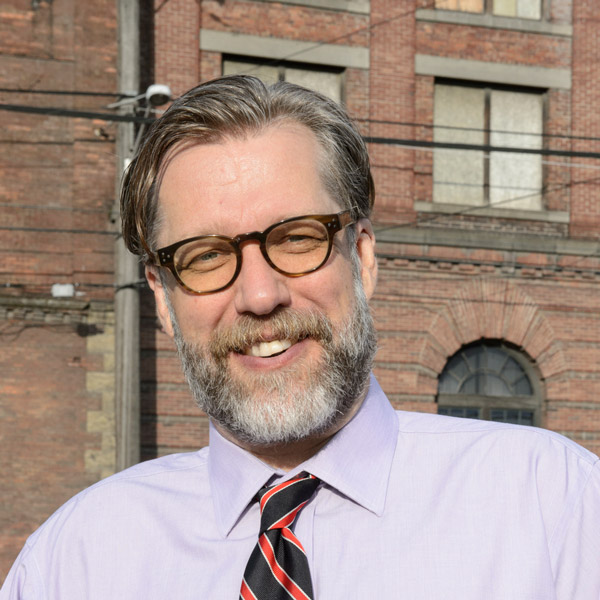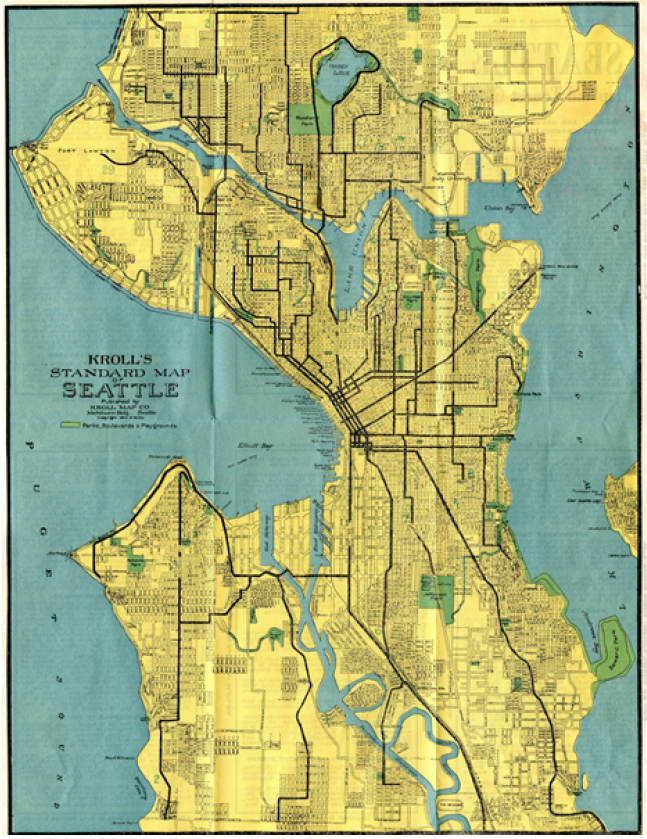Two at-large City Council candidates released an ambitious plan on Wednesday to build a “neighborhood municipal rail system.” Alon Bassok, an urban planner running for District 9, and John Roderick, a musician and journalist running for District 8, issued a joint press release outlining their plan.
The Plan
Roderick and Bassok call for a 75-100 mile “world-class” rail system to connect Seattle’s neighborhoods in just 10 years at a cost of $1 billion. If that sounds ambitious, it is.
The system would be separated from traffic, with its own lane and signal prioritization—much like Sound Transit’s Link light rail along MLK. It aims to supplement and complement Link, which the duo criticizes as being too little and too slow to relieve the growing pressures of Seattle growth.
They harken back to a golden era 100 years ago when we had nearly 200 miles of track throughout the city, connecting West Seattle, Rainier Valley, Queen Anne, Ballard, and more.
Long-range bonds, costing homeowners less than $200 annually, would cover initial capital costs. A new employee hours tax, similar to the defunct head tax cut during the recession, would cover maintenance and operation.
Their plan is similar, though more detailed than one proposed by District 4 candidate Michael Maddux in March.
What’s Good
There’s a lot to celebrate about this plan. First and foremost, two City Council candidates are calling for the most ambitious transit plan the City has seen in recent memory. Their vision is moving the conversation around transit forward in a big way.
It’s clear the city is thirsty for new transit, with residents voting for the largest transit expansion in city history last November. We’re growing fast, and our roadways are nearing, at, and over capacity. Single occupancy vehicles are the least efficient way to move people. The only way to increase the capacity of our roads is to invest in high capacity transit with dedicated right-of-way like bus rapid transit (BRT) and streetcars.
Rail has a number of proven benefits over bus service. It has higher ridership, greater capacity, lower operating costs, it stands out, it’s more comfortable, and it reassures riders that that they’re on the right route and that the line is there to stay. SDOT recently released information on the Roosevelt high capacity transit corridor, estimating that a rapid streetcar would offer 25% greater capacity than even bus rapid transit.

What Needs Work
The plan offers a great vision, but there is ample room for improvement.
To start, the plan radically underestimates the cost of such an endeavor. With a price tag of $1 billion for 75-100 miles, the pair estimate the average cost per mile at $10-13 million.
In a recent article, The Stranger compared the cost of Bassok and Roderick’s plan to that of light rail, which cost $2.7 billion for a mere 15.6 miles, averaging $173 million per mile. At that rate, we’d wind up with just 5.7 miles of track—equivalent to the South Lake Union, City Center Connector, and First Hill lines combined.
But that comparison isn’t fair, as Bassok pointed out. Their plan is closer to an upgraded streetcar than light rail.
So let’s look at the cost of our two most recent streetcar projects. The South Lake Union line came in at $56.4 million for a 1.3 mile line, averaging $43 million/mile. The First Hill line was a bit pricier at $134 million for a 2.5 mile line, averaging $53.6 million/mile. If we average the two at $50 million/mile, that buys us 20 miles—far short of the promised 75-100. Indeed, we would need to at least quadruple revenue to build their vision.
And there is reason to think the cost would be even higher. While Bassok and Roderick claim their plan is cheaper because it avoids large capital investments like tunnels and bridges that Link requires, it is unclear how the lines would then reach West Seattle or Ballard as promised.
Bassok and Roderick defend the cost of their proposal, writing, “Our proposed price tag of $1 billion is an estimate based on the cost of other national systems developed across the US (see the table below).”
| City | Stations | $/Mile (Millions) |
| LittleRock | 15 | $8.5 |
| Tampa | 11 | $11.9 |
| Memphis | 25 | $14.9 |
| Salt Like | 7 | $27.5 |
| Seattle | 11 | $30.7 |
| Dallas | 4 | $31.9 |
| Atlanta | 12 | $33.3 |
| Portland | 76 | $34.2 |
| Tuscon | 22 | $50.3 |
This raises more questions than it answers. First, this table yields an average cost of $27 million/mile. Why, then, did the two estimate that the cost would be just $10-15 million/mile? Further, why did they not use Seattle’s average cost per mile ($30.7 million)—a figure that is already lower than what our research suggests ($50 million).
To pay for the proposal, the two candidates pointed to long-range bonds. As a financing tool, bonds carry the advantage of providing funds sooner. But they come at the cost of high interest rates.
On a laypersons’ reading of the City’s current bonding capacity, it appears we could accommodate up to $2 billion in bonds before hitting our statutory limit. But that presents several problems. First, it would cap out our capacity for any future projects for decades. Second, it could adversely affect the City’s credit rating by violating our debt management policies. Thirdly, there may be a fight for bonding capacity with affordable housing advocates who want to use bonds to build city-owned housing. Finally, and perhaps most importantly, $2 billion in bonds does not provide $2 billion to fund construction, since a significant portion will be reserved to pay interest.
Roderick and Bassok point to the availability of federal funds to help reduce the burden on city taxpayers. The South Lake Union Streetcar received $25 million in federal grants, covering 47% of the total cost. Equivalent federal support for their citywide streetcar system would come in around $500 million (assuming we still trust the $1 billion price tag).

The Federal Transit Administration’s 2014 budget for capital investment grants was $2 billion. The program is designed to support a variety of projects including heavy rail, light rail, commuter rail, bus rapid transit, and streetcar systems across the country. It seems unlikely that a single streetcar project could receive 25% of the annual budget.
Other revenue sources exist, to be sure. Some candidates have proposed a local income or capital gains tax. The Seattle Monorail Project planned to raise $1.6 billion in funding using the motor vehicle excise tax (MVET). Property tax levies have also been used to fund a host of new projects, including the Mayor Murray’s proposed Move Seattle levy—though, as we’ve written before, there are concerns about remaining levy capacity. In short, revenue could be found, but it will be a much larger effort than suggested.
Beyond cost, it is unclear that rail is the single optimal solution for our transportation dilemma. The Transit Master Plan (TMP) identified over 100 miles of high capacity transit across 15 corridors for investment. The plan calls for modes like enhanced bus service (e.g., Rapid Ride), bus rapid transit, local streetcar (e.g., SLU and First Hill), and rapid streetcar. Specifically, the plan notes that rail is not the proper investment for each corridor. Constraints including limited right-of-way and steep grades make rail impractical or impossible. The steep grade on the Madison corridor, for example, disqualified a streetcar from consideration.
The two candidates believe their plan does not conflict with the TMP, but rather augments it. “A municipal rail system,” they write,” would…reallocate duplicative bus service hours to provide more comprehensive transit service to and within Seattle.”
Scott Bonjukian, a writer here and at The Northwest Urbanist, also raised potential concerns among cyclists over the “potential for road bike wheels to get caught in tracks.” He suggested that parallel bike lane infrastructure could mitigate these concerns, in addition to rubber strips that fill the gap, but depress under the weight of streetcar wheels. As we expand different mode shares within our public right of ways, it will be important to consider how these modes interact in ways that both compliment and detract from each other.
Concluding Points
Roderick and Bassok ought to be commended for their ambition. They’ve given the City a vision upon which to build a world-class transportation system. They rightfully focus on bringing traffic-separated, high-capacity transit as soon as possible.
The plan, as outlined, is imperfect. It will need to sell voters on a massive price tag and negotiate the existing Transit Master Plan. But these are problems for any ambitious plan, and this duo is just getting started.

Ben Crowther
Ben is a Seattle area native, living with his husband downtown since 2013. He started in queer grassroots organizing in 2009 and quickly developed a love for all things political and wonky. When he’s not reading news articles, he can be found excitedly pointing out new buses or prime plots for redevelopment to his uninterested friends who really just want to get to dinner. Ben served as The Urbanist's Policy and Legislative Affairs Director from 2015 to 2018 and primarily writes about political issues.


